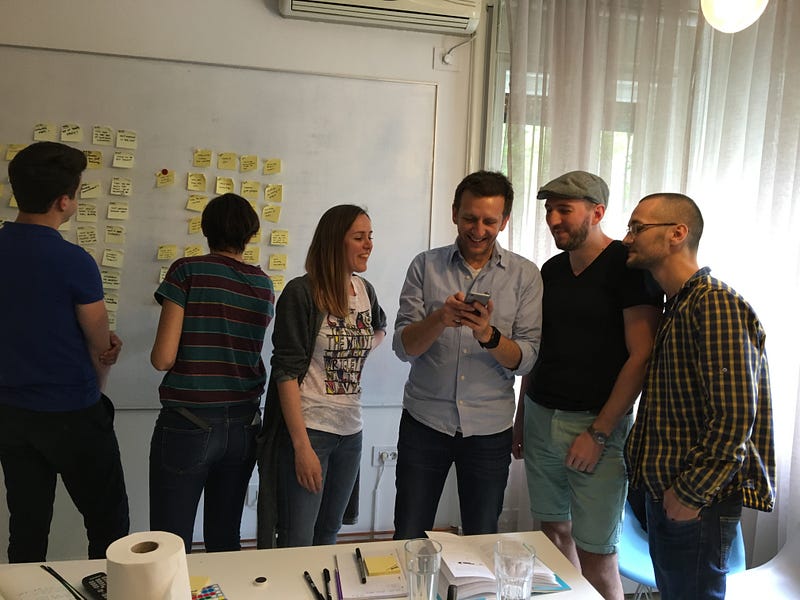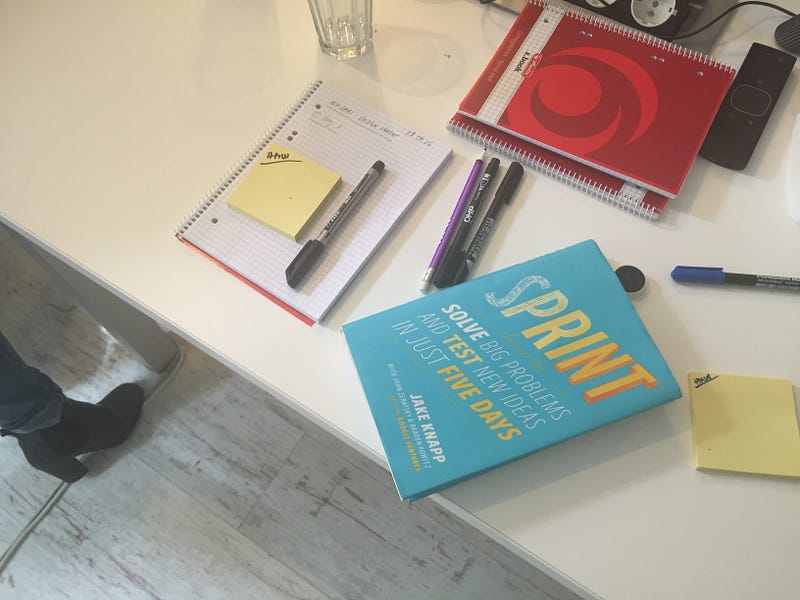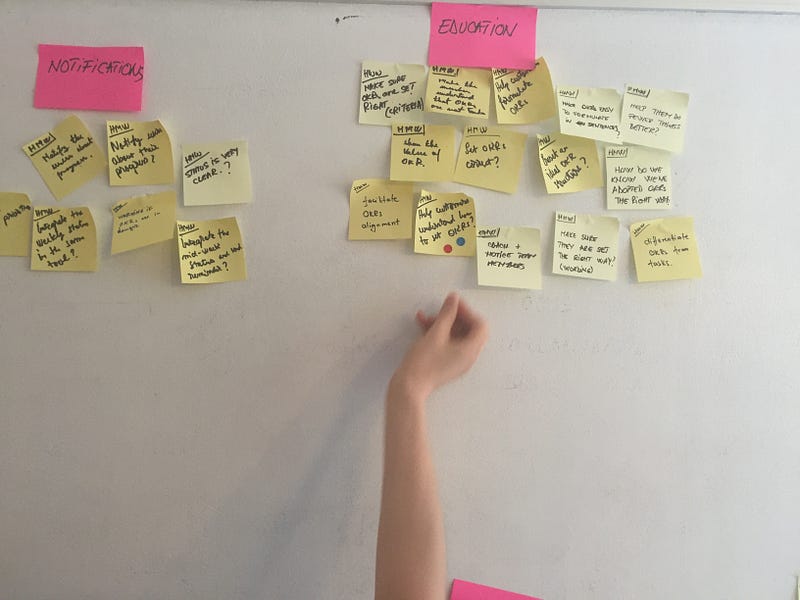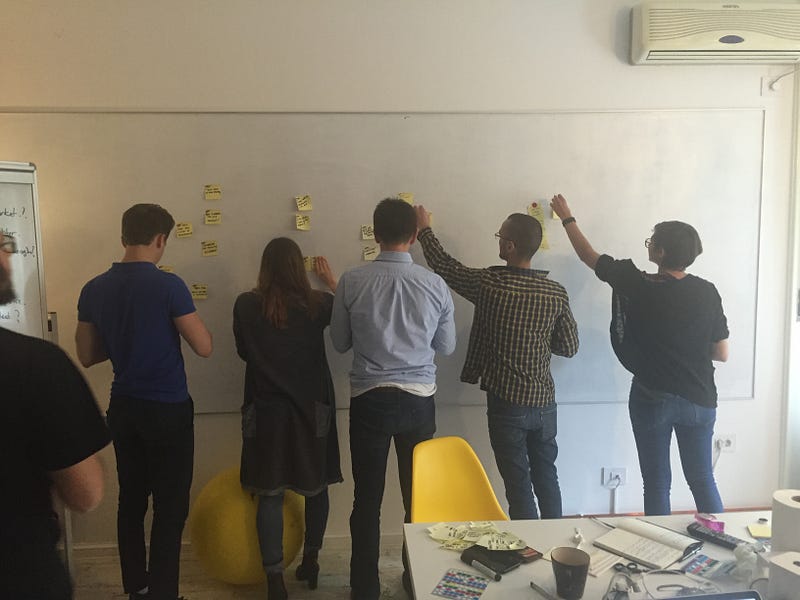Launch better products in 5 days: Part 3 of 4
In the previous articles in this series we first provided you with a foundation of what design sprints are and why they’re invaluable to companies trying to solve important products. In the second article, we shared a behind-the-scenes look at a design sprint we recently ran for an early stage startup.
In this article we’re going to focus on 2 related topics that will help you prepare a team that can run a successful design sprint:
Generating support from your company to conduct a sprint
Putting the right sprint team together to execute

Engage your company
Once you’ve put the pre-work in to select a business challenge to run your design sprint on, your next step is getting others around you committed. These people may include co-founders, board members, designers, engineers, and marketers. They may be peers, managers, or junior members.
Depending on your team’s progress-to-date + outside pressure (e.g. board, investors, customers), getting everyone to agree to a design sprint may be the easiest decision you’ve made since opening your doors. Alternatively, it may require a bit of finessing, in which case we’ve laid out 3 options for rallying everyone together.
Good news: We’ve already tested and validated each of these options time and again. We’ve also experimented with others, but none had as much success.
Option 1: Distribute copies of the Sprint book + pitch it
Ask the team to read the book. In the meantime, break out Keynote, organize your compelling pitch about the benefits of a design sprint versus what you’ve failed to deliver on historically (and likely for a lot more time & money), call a meeting and do your best Jordan Belfort impersonation.

Note: For the ultra lazies, you can prompt your team to skip the book and review this Sprint Checklist. Or, they can just read through this series.
Pros:
If they share your passion, they should be at least mildly stoked to give it a shot.
This is about as low risk / low cost as it gets.
Cons:
People are not to be trusted + people are lazy = people may not read the book, nor take you seriously.
Your pitch bombs, people throw stuff at you and you’re never asked to participate in another sales call.
Option 2: Run a 1-day sprint demo
With this approach you’ll run a hyper-condensed version of the design sprint in 1 business day.
If we pretend the typical business day is a true 8 hours, you’ll leave 1 hour first thing in the morning for the team to take care of their administrative duties + 1 hour for lunch. The other 6 hours are to be used to work through the sprint.
Pros:
This highly collaborative environment is contagious. Expect for it to boost confidence and team dynamics.
6 hours should be easy to sell.
Cons:
The abbreviated schedule could back-fire if not laser focused. Consider bringing in some outside help (see option 3).
Option 3: Get some outside help
The previous options assume you have the team and know-how to create your own momentum with design sprints. However, some of you reading this may be a company of one. And some of you may simply not be up to the task, or you don’t have the time to rouse the team.
In these instances, consider bringing in some outside expertise, who already have the process and experience nailed down.
You have 2 options here:
Contracting a professional facilitator.

Pros:
Outsiders with vetted experience tend to carry more influence.
Pros who’ve run many sprints will be able to offer outside perspective
The best facilitators will help you avoid costly missteps and landmines, so you can focus on the company objectives rather than managing sprint operations.
Cons:
Options are often slim for finding trustworthy providers.
In the end, the goal is for you to get your existing team on board with a running a 5-day design sprint. Consider your team dynamics, roadmap and pressures so you can get them over that hump with as little friction as possible. And if you discover a better option, please let us know in the comments.
Your sprint team
Once your company is enacted to run a sprint, the next order of business is selecting and rallying your sprint team. You’ll want to assemble a balanced team that can 100% commit to the process. But you’ll also need a good mix of personalities, skills and disciplines.
Google Ventures recommends a team no larger than 7. We agree — otherwise, you go from running a sprint to managing a mob. You will have your hands full keeping the team from jumping directly into solution mode — that dynamic worsens the more people you have in the room.
Below are the 5 roles we’ve found to be absolutely necessary in running a quality sprint.
Product chief, aka the shot caller or decider
This is the person with the most sway, and often the biggest, shiniest voting stickers. Though it’s often the case, this won’t always be the boss / owner / VP of Product / CEO. In some cases we’ve seen heads of customer service, lead engineers and sales execs charter this role. What’s most important is that this person has the most tangible exposure to the problem you’re trying to solve.
Facilitator
The design sprint facilitator undoubtedly has the biggest load to carry. Of all the roles on the sprint team, this is the one we get hired to help out with the most.
Aside from confirming you’ve done all of the required pre-sprint work and that the best-fitting cast has been assembled (sprint team, experts, and customers), there is also a ton to manage during and after the sprint. Designate one person on your sprint team as the facilitator — their primary role is to ensure the team keeps up with the aggressive pace of a 5-day sprint.
Customer rep
If your product chief doesn’t have immersive, daily interaction with your customers, be sure to recruit this role onto your sprint team. They’ll often be the ones to cut through the sales & marketing hype you’ve tried ad nauseam, while pinpointing the precise issues your customers are challenged by.
Designer
In the first article we talked about creating Goldilocks-quality prototypes. Having a designer involved in the sprint process is important because they can quickly make things look good enough.
Design sprints also require lots of visualizing of ideas. Designers (along with the facilitator) are often leaned on to help encourage this show-don’t-tell approach.
Engineer
While you don’t need to be a technology company to run a sprint, the majority of prototypes you’ll be testing will require some kind of engineering talent. The engineer on the team may produce software, hardware or some other real world product prototype.
Marketing
The words used to describe and market your product as well as the words within the product itself are just as important as the form and function of your prototype. Make sure someone is present that’s blessed with the ability to effectively wordsmith.

Summary
Design sprints will require a true commitment from your team. Once they’re in, you’ll want to mobilize a team that’s willing to clear their schedules and charge through the sprint. And hopefully you now have the structure to accomplish those 2 objectives.
In the next and final article in this series, we’ll provide guidance on the biggest challenges / questions / pushback we’ve faced while leading design sprints.


